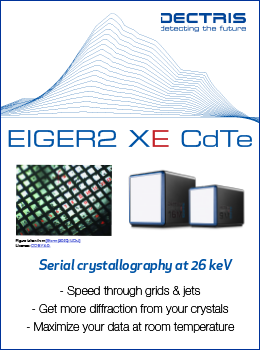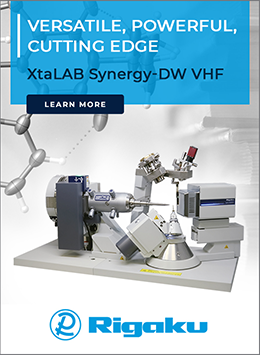
Research news
SSRL joins global fight against COVID-19
![Fig1 [Fig1]](https://www.iucr.org/__data/assets/image/0007/148561/fig1.png)
Figure 1. GC373 binds in the active-site pocket of SARS-CoV-2 Mpro (3CLpro). A) The feline drug GC373 is a peptidyl inhibitor; the P1, P2 and P3 residues are indicated. B), C) GC373 forms a covalent bond with the catalytic residue Cys145. The oxyanion is stabilized by backbone hydrogen bonds with G143, S144 and C145. Hydrogen bonds are established with the P1 and P3 residues of GC373 and side chains of H163, E166 and H172 as well as the backbone of residue E166. SARS-CoV-2 Mpro is represented in cartoon form with the inhibitor in green. PDB entry 6WTJ (Khan, M. B., Arutyunova, E., Young, H. S. & Lemieux, M. J., to be published).
As part of the international response to the COVID-19 pandemic, the Stanford Synchrotron Radiation Lightsource (SSRL) at the U.S. Department of Energy’s (DOE) SLAC National Accelerator Laboratory has re-opened some of its beamline facilities. They will be used to obtain fundamental information on the atomic structure of macromolecules related to the SARS-CoV-2 virus and how it interacts with potential drug treatments and vaccines.
While the March 16 San Francisco Bay Area’s shelter-in-place order temporarily shut down all but essential operations at SLAC, SSRL is operating a subset of its Structural Molecular Biology resource synchrotron experimental stations. This includes three macromolecular crystallography (MC) beamlines, a small-angle X-ray scattering (SAXS) beamline and several cryo-EM instruments to perform COVID-19-related research.
Researchers from academic institutions in the USA and Canada have been using the MC X-ray beamlines to study the atomic structures of multiple SARS-CoV-2 targets. They include groups from Stanford University, University of California in San Francisco, The Scripps Research Institute, Thomas Jefferson University and the University of Alberta.
This work includes antibody complexes of the spike proteins that reside on the surface of SARS-CoV-2. Spike proteins dock onto receptor molecules on the surface of cells in the lungs, heart or intestines and allow entry of the virus into the host cells where the virus is replicated.
Several other research projects are employing structure-based approaches to design antiviral drugs targeting RNA-dependent RNA polymerase and drugs that treat the disease by modulating or blocking host proteases that are central to virus replication.
Just recently, the Lemieux group (University of Alberta) solved several structures of coronavirus drugs bound at the active-site pocket of the main protease of SARS-CoV-2 (Fig. 1), effectively blocking virus replication [1]. This may be a strong drug candidate for the treatment of human coronavirus infections because it has already been successful in treating SARS-CoV in animals.
The MC facilities are fully operated by the external investigators in remote-access mode, while supported by a minimal number of on-site SSRL staff, in accordance with physical distancing rules. SSRL was a pioneer in the field of automation, robotics and remote access [2–5], and is in an ideal position to operate under the conditions of a pandemic. The Stanford Auto-Mounter (SAM) robot mounts samples, stored in liquid nitrogen, into the experimental station (Fig. 2). The MC beamlines are typically used via remote access (about 95%), and the MC-developed control software and GUI, Blu-Ice, allows for real-time experimental control and collaboration all over the world [5]. See https://www6.slac.stanford.edu/news/2020-04-16-slac-joins-global-fight-against-COVID-19.aspx.
In the video shown above, a robot mounts samples, stored in liquid nitrogen, into an experimental station for X-ray crystallography at SLAC’s synchrotron, SSRL (Aina Cohen, Silvia Russi, SLAC National Accelerator Laboratory).
“We’re able to do this research and, at the same time, follow strict physical distancing protocols because our experimental stations are highly automated and require only minimal staff on site,” said Aina Cohen, who co-leads SSRL’s Structural Molecular Biology Division. “Researchers can send us frozen samples to be mounted by robots into the experimental stations. The remote researchers then use our software and video tools to control the robots, view their samples and control all the details of their experiment from their home laboratory, or even from their homes.”
Studies of a conserved coronavirus enzyme, at physiological temperatures associated with infection in humans, were also conducted by the Fraser group (UCSF). Understanding how these changes affect the structure and interactions of this enzyme, which has been shown to promote virulence in the coronavirus family, may provide key insight leading to the development of antiviral therapeutics.
Cohen added, “We are excited to be soon expanding our remote program to offer the ability to safely ship and collect data at ambient temperature. This will significantly improve the efficiency of these types of experiments and the quality of the CoV-related structures determined at physiologically relevant temperatures.”
Another method used at SSRL for COVID-19-related research is SAXS. This method is used to probe macromolecules and, in particular, macromolecular assemblies and complexes in a solution environment. It not only determines the general shape and solution structure of the molecule or molecular complex or assembly but also can be applied to investigate interaction potentials and structural changes due to ligand binding.
Similar to the MC facilities at SSRL, the instrument and some of the major sample environments at the SAXS beamline 4-2 are highly automated [6] and can be operated remotely via a customized version of the Blu-Ice control system. Thus, the most frequently performed experiments at the beamline can be carried out by users at their home institutions with only minimal help from on-site staff members.
In one of the current projects, Thomas Weiss, who oversees the research at this experimental station (Fig. 2), is collaborating with Gerard Wong’s laboratory and other scientists at the University of California, Los Angeles, as well as researchers at the University of California, San Diego, to look at the interactions of selected pieces of the viral proteome that interact with the machinery of the human immune system. Insights into these interactions could help scientists understand why SARS-CoV-2 is so infectious and causes so much inflammation – a principal reason for why it is so deadly.
![[Fig2]](https://www.iucr.org/__data/assets/image/0004/148531/fig2.jpg)
Researchers at two National Institutes of Health (NIH)-funded centres – the Stanford-SLAC Cryo-EM Center and the National Center for Macromolecular Imaging – are pursuing answers to very similar questions with cryo-EM, which uses electron beams to study the novel coronavirus and how its molecular components interact with drugs or antibodies. One advantage of this technique is that it produces atomic resolution images of biomolecules in their frozen hydrated state, with no need for crystallization.
“One of the projects in full swing is a collaboration with Professor Rhiju Das at the Stanford Medical School that is aimed at designing a drug to keep viral RNA from carrying out its normal function,” said Wah Chiu, director of the NIH centres. This work involves developing synthetic RNA molecules that mimic stretches of the viral RNA, determining their 3D structures with cryo-EM and using that information to build molecules that can bind and deactivate the RNA.
In addition, Chiu and his colleagues have teamed up with several groups around the world that are preparing virus-like particles, viral proteins and RNA–protein complexes for cryo-EM analysis, as well as virus-infected cells for tomographic studies of what exactly the virus does once it enters host cells.
SLAC is also planning to bring experimental stations at its Linac Coherent Light Source (LCLS) back online for COVID-19-related research. One of the brightest X-ray sources on Earth, this X-ray free-electron laser will complement other techniques – looking, for example, at hard-to-crystallize viral particles at room temperature to see how the virus attacks host cells and interacts with potential drugs under conditions that are close to those in the human body.
The SSRL Structural Molecular Biology Program is supported by the DOE Office of Biological and Environmental Research, and by the NIH and the National Institute of General Medical Sciences (including P41GM103393).
References
Michael Soltis and Aina E. Cohen are Co-Group Leaders of the Macromolecular Crystallography Group at SSRL.
Copyright © - All Rights Reserved - International Union of Crystallography









